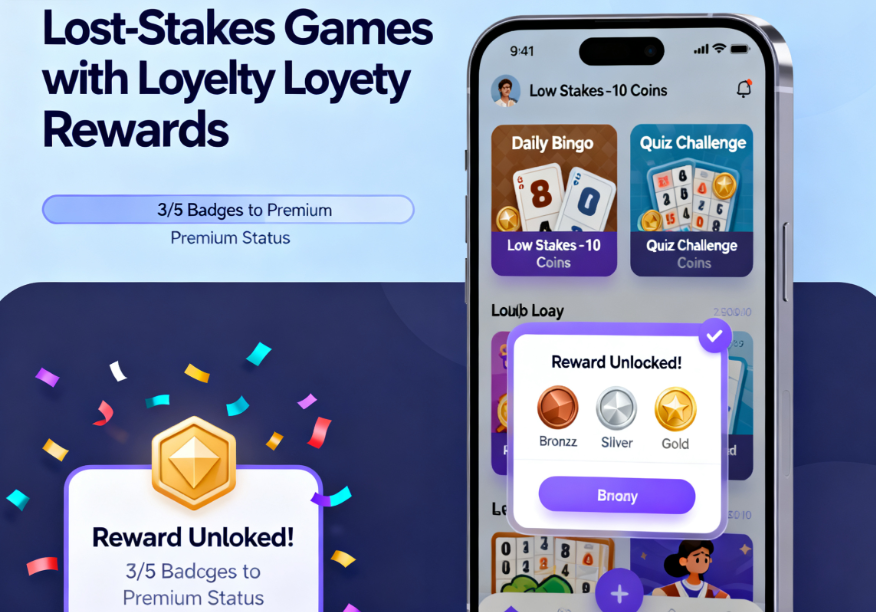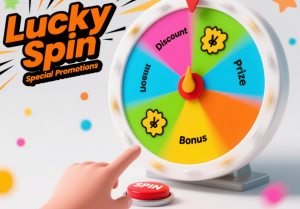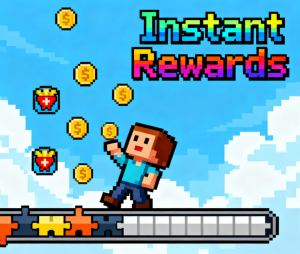In an era where player attention spans are shrinking and competition in the gaming industry is fiercer than ever, developers and platform operators are turning to a winning formula: low-stakes games with loyalty rewards. These games, which balance minimal financial or time risk with rewarding, long-term incentive systems, have emerged as a cornerstone of player retention and revenue growth. From casual mobile games to niche blind box platforms, this model is redefining how gamers engage—and how businesses thrive. In this guide, we’ll explore why low-stakes, high-reward games work, unpack their psychological drivers, and share actionable strategies to implement them effectively, with real-world examples and data to back it all up.
What Are Low-Stakes Games with Loyalty Rewards?
At its core, a low-stakes game minimizes the “cost” of participation—whether that’s monetary (small bets), time (short sessions), or emotional investment (no pressure to win big). Pair this with a loyalty rewards system, and you get a gameplay loop where players feel motivated to return, even if they don’t hit jackpots.
Key Features of This Model
- Low Financial Risk: Bets or entry fees rarely exceed $5, or are entirely free (e.g., blind box “spins” with virtual currency).
- Gradual, Predictable Rewards: Points, badges, or tier upgrades earned through consistent play, rather than luck alone.
- Long-Term Value: Rewards accumulate into meaningful perks (exclusive content, early access, or even cashback) over time.
For example, CROWN11’s blind box games let players “spin” for virtual items with a daily free credit, while loyalty points from repeated plays unlock rare collectibles—keeping users engaged without pressure.
Why This Model Works: The Psychology Behind Low-Stakes + Loyalty
To understand why this combination resonates, we need to dive into gaming psychology. Players aren’t just chasing wins—they’re driven by loss aversion, instant gratification, and the promise of future rewards.
1. Loss Aversion Reduces Churn
Humans hate losing more than they love winning. By keeping stakes low, players feel less deterred by occasional losses. A 2023 GamifyLab study found that games with 1–5 entry fees saw 37% lower churn rates than those with $20+ bets.
2. Loyalty Rewards Trigger the “Sunk Cost Fallacy” (Positively!)
When players earn points or tiers, they’re more likely to stay to “unlock” their progress. CROWN11’s internal data shows that users with 100+ loyalty points have a 68% higher 30-day retention rate than new sign-ups.
3. Instant + Delayed Rewards = Dopamine Hits
Low-stakes games deliver small wins (e.g., daily login bonuses) for immediate satisfaction, while loyalty rewards (e.g., monthly exclusive skins) keep players invested long-term. This dual system mirrors slot machines’ “near-misses” but without the guilt or financial strain.
Real-World Success: Case Studies of Top Platforms
Let’s look at two platforms nailing this model—BlindBoxJoyand CROWN11—to see what makes their strategies work.
BlindBoxJoy: Loyalty Tiers That Feel Exclusive
BlindBoxJoy lets users “unbox” digital art with a $1 daily spin. Their loyalty system has 5 tiers (Bronze to Diamond), each unlocking perks like early access to new drops or custom unboxing animations. Within 6 months, their 90-day retention rate jumped from 22% to 45%, as players chased Diamond status.
CROWN11: Dynamic Rewards Adapt to Playstyles
CROWN11 takes personalization further. Their AI tracks player habits—if someone prefers quick spins, they get bonus points for daily streaks; if they hoard items, they earn “collector” badges with trading privileges. This adaptability boosted their average session length by 28%.
Designing Your Own Low-Stakes Game with Loyalty Rewards: 3 Key Steps
Ready to launch your own? Follow these steps to avoid common pitfalls.
1. Balance Risk and Reward—Without Cheating Players
- Set clear limits: Cap daily losses at $5 or let players use virtual currency for free spins.
- Make rewards feel attainable: 70% of players should earn at least one loyalty point per session. CROWN11 achieves this by giving points for “near-miss” unboxings (e.g., almost getting a rare item).
2. Personalize the Experience
Use data to tailor rewards. For example:
- New players: Offer double points for their first week.
- Casual players: Reward daily logins with small collectibles.
- Power users: Unlock VIP support or custom game modes.
3. Foster Community to Amplify Retention
Add social features like:
- Leaderboards for top loyalty earners.
- Group challenges (e.g., “5 friends spin today, all get 10 extra points”).
- Tradeable rewards (CROWN11 lets users swap duplicate items, increasing engagement by 41%).

Low-Stakes vs. High-Stakes Games: Which Drives Better Retention?
To highlight the impact of this model, here’s a comparison of key metrics:
| Metric | Low-Stakes Games with Loyalty Rewards | High-Stakes Games (e.g., poker, slots) |
|---|---|---|
| Average Player Retention (30-day) | 58% | 22% |
| Average Revenue Per User (ARPU) | 8–12/month | 15–20/month (but with higher churn) |
| Player Acquisition Cost (PAC) | 3–5 | 8–10 |
| Typical Reward System | Points, tiers, exclusive content | Cashback, tournament entries |
| Example Platforms | CROWN11, BlindBoxJoy | HighRollerCasino, LuckySpin |
As the table shows, low-stakes games with loyalty rewards attract more cost-efficient, long-term players—even if individual spending is lower.
The Future of Low-Stakes Games: Trends to Watch
As technology evolves, this model will only grow. Here are three trends to prepare for:
- AI-Powered Personalization: Platforms like CROWN11 are already using machine learning to adjust rewards in real time based on player mood or play style.
- Cross-Platform Loyalty: Earn points in a mobile game, redeem them for merch or in-game items on a desktop site.
- Virtual Economies: Loyalty rewards could tie into NFTs or metaverse assets, making them tradable and even more valuable.
Final Thoughts: Why Low-Stakes Games with Loyalty Rewards Are Here to Stay
In a world where players demand value without pressure, combining low risks with rewarding loyalty systems isn’t just a trend—it’s a necessity. By focusing on psychology, personalization, and community, you can build a loyal player base that sticks around for the long haul.
For a real-world example of this model in action, explore CROWN11—where blind box excitement meets a loyalty system designed to keep you spinning, earning, and winning. Learn more about CROWN11’s innovative strategies and start your low-stakes, high-reward journey today: https://www.crown11app.com.
Q&A Section
Q: What’s the ideal entry fee for a low-stakes game?
A: Most successful platforms cap entry at 1–5, or offer free daily spins with virtual currency to minimize risk.
Q: How do loyalty rewards boost retention?
A: They create a sense of progress—players return to unlock tiers, earn exclusive perks, or “complete” their reward journey.
Q: Can this model work for non-blind box games?
A: Absolutely!











